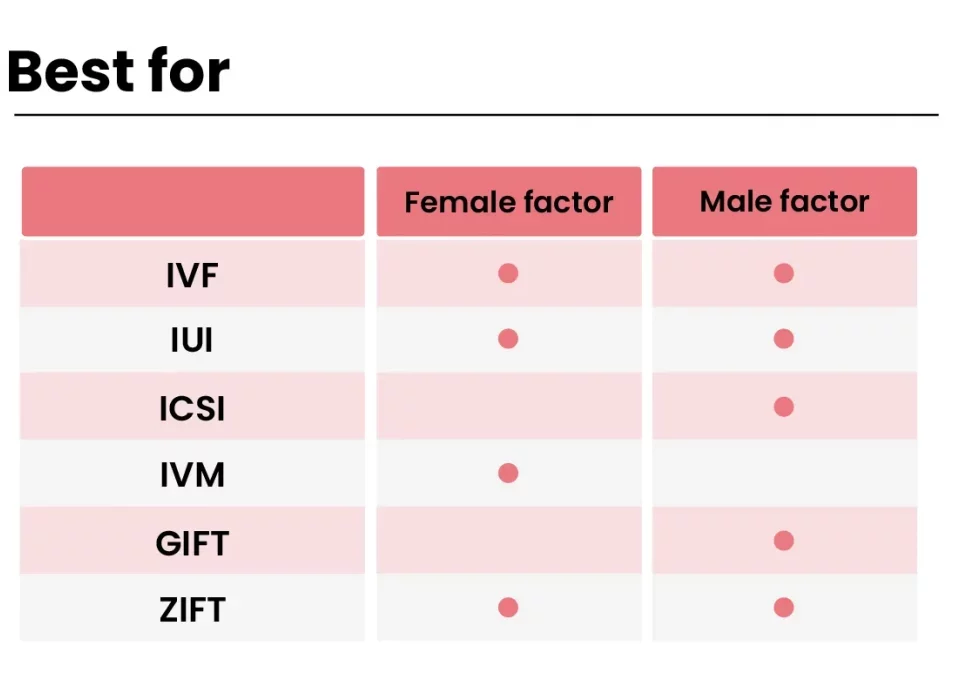
Can You Pick Gender with IVF? Everything You Need to Know
April 3, 2025Does JD Vance Want to Cut IVF? Exploring the Truth Behind the Headlines
April 4, 2025When Was IVF Invented? A Deep Dive into the History and Future of In Vitro Fertilization

When Was IVF Invented? A Deep Dive into the History and Future of In Vitro Fertilization
Imagine a world where starting a family wasn’t possible for some couples, no matter how much they wanted it. Now picture a breakthrough that changed everything—a scientific marvel that brought hope to millions. That’s the story of in vitro fertilization, or IVF. It’s a term you’ve probably heard before, but do you know when it all began? Spoiler alert: it’s a tale that stretches back further than you might think, with twists, triumphs, and a few unsung heroes along the way. Let’s take a journey through time to uncover when IVF was invented, how it evolved, and what it means for families today.
The Birth of IVF: A Milestone Moment in 1978
The big moment everyone talks about happened on July 25, 1978. That’s when Louise Brown, the world’s first “test-tube baby,” was born in Oldham, England. Her arrival wasn’t just a personal joy for her parents, Lesley and John Brown—it was a global sensation. Newspapers splashed headlines, scientists cheered, and hopeful parents everywhere started dreaming of possibilities. But who made this miracle happen?
Two British pioneers, Dr. Patrick Steptoe and Dr. Robert Edwards, were the masterminds. Steptoe was a gynecologist who’d been perfecting a technique called laparoscopy—a way to peek inside the body with a tiny camera. Edwards, a physiologist, had spent years figuring out how to fertilize human eggs outside the body. Together, they combined their skills to create something revolutionary. They took an egg from Lesley’s ovary, fertilized it with John’s sperm in a lab dish (that’s the “in vitro” part, meaning “in glass”), and then placed the tiny embryo back into Lesley’s womb. Nine months later, Louise arrived, healthy and screaming, proving IVF could work.
But here’s the thing: 1978 wasn’t the starting line. It was the finish line of a long, winding race that began decades earlier. Let’s rewind the clock to see how we got there.
The Early Days: Seeds of IVF in the 19th Century
IVF didn’t pop up out of nowhere. Its roots stretch back to the 1800s, when scientists first started poking around the mysteries of reproduction. In 1827, a German biologist named Karl Ernst von Baer spotted the human egg under a microscope—pretty groundbreaking stuff for a time when people still thought babies came from magic (okay, not really, but close enough!). This discovery laid the groundwork for understanding how life begins.
Fast forward to 1890, and an English doctor named Walter Heape took things a step further. He transferred an embryo from one rabbit to another, resulting in a successful pregnancy. It wasn’t IVF as we know it—there was no lab dish involved—but it showed that moving embryos around could work. Think of it like the first draft of a big idea.
Then, in the 1930s, two American scientists, Gregory Pincus and Ernst Enzmann, tried something bolder. They attempted to fertilize rabbit eggs in a lab. Their experiment worked, sort of—the eggs started dividing, but later studies showed the fertilization might’ve happened inside the rabbit before they got to the dish. Still, it was a hint that lab-based fertilization wasn’t just a sci-fi fantasy.
The 1940s and 1950s: Baby Steps Toward Human IVF
By the mid-20th century, the pieces were falling into place. In 1944, Dr. John Rock and his assistant Miriam Menkin made history in the U.S. They fertilized a human egg in a lab dish and watched it divide into a few cells. It didn’t lead to a pregnancy—they didn’t have the tech to implant it—but it was proof that human eggs could be fertilized outside the body. Rock, a devout Catholic, saw this as a way to help infertile couples, not defy nature.
Around the same time, in 1959, a scientist named Min Chueh Chang cracked another piece of the puzzle. Working with rabbits, he showed that eggs fertilized in a lab could develop into healthy babies if transferred back into a womb. Chang’s work was a game-changer—it gave Edwards and Steptoe a roadmap to follow years later.
So, while 1978 gets the spotlight, the 1940s and ’50s were when IVF started to take shape. It was like scientists were building a plane while figuring out how to fly it—slow, messy, and full of trial and error.
The 1970s: The Race to the First IVF Baby
The 1970s were crunch time. Edwards and Steptoe teamed up in 1968, determined to make IVF a reality for humans. They faced huge hurdles—skeptics called it “unnatural,” funding was scarce, and the tech was clunky. Edwards once got a rejection letter from a research council saying they wouldn’t fund human experiments because of “ethical doubts.” Ouch. But they kept going.
Their first tries were rough. In 1975, they got a pregnancy, but it implanted in the wrong spot (an ectopic pregnancy) and didn’t survive. They tweaked their methods—using hormones to boost egg production, perfecting the timing, and figuring out how to grow embryos just right. By 1977, they nailed it with Lesley Brown. Louise’s birth in 1978 wasn’t just a win for them—it was a win for every couple struggling to have a baby.
Oh, and here’s a fun fact: another doctor, Subhash Mukhopadhyay in India, claimed he’d done IVF successfully just 67 days after Louise was born. His baby, named Durga, arrived on October 3, 1978. But the Indian government dismissed his work, and he didn’t get credit until years later. Talk about an underdog story!
Why IVF Took So Long to Invent
So, why did it take from the 1800s to 1978 to get IVF right? A few reasons:
- Tech Trouble: Early microscopes and tools were basic. Scientists needed better ways to see and handle tiny eggs and sperm.
- Biology Mysteries: Figuring out how eggs mature, how sperm work, and how embryos grow took decades of research.
- Society’s Pushback: Religious groups and ethicists worried about “playing God.” Some called IVF dangerous or immoral, slowing progress.
It’s wild to think that something we take for granted today was once a pipe dream. But every stumble along the way built the path to 1978.
IVF Today: How Far We’ve Come
Since Louise Brown, IVF has exploded. Over 8 million babies have been born through IVF worldwide by 2018, and that number’s climbing fast. In the U.S. alone, it accounts for 1-2% of births each year, according to the CDC. Success rates have soared too—back in the ’80s, it was a 5-10% shot per cycle; now, for women under 35, it’s closer to 50%, says the American Society for Reproductive Medicine.
What’s changed? Tech, for one. Doctors now use ultrasound instead of invasive laparoscopy to grab eggs. Hormones are fine-tuned to grow multiple eggs at once. And embryos? They’re screened with something called preimplantation genetic testing (PGT) to pick the healthiest ones. Plus, freezing eggs and embryos—cryopreservation—lets people wait years before trying for a baby.
But it’s not just about tech. IVF’s opened doors for all kinds of families—single parents, same-sex couples, people with genetic conditions. It’s not perfect (it’s pricey, averaging $12,000-$25,000 per cycle), but it’s a lifeline for many.
The Unsung Heroes of IVF
Everyone knows Edwards (he won a Nobel Prize in 2010) and Steptoe, but what about the others? Miriam Menkin doesn’t get enough love—she was the hands-on genius behind those 1944 fertilizations. Subhash Mukhopadhyay’s story is heartbreaking; he faced ridicule and took his own life in 1981, only to be recognized posthumously. And don’t forget the patients—like Lesley Brown—who trusted untested science when the world was watching.
These folks didn’t just help invent IVF; they shaped its soul. They remind us it’s not just about labs and petri dishes—it’s about people chasing a dream.
Interactive Quiz: Test Your IVF Knowledge!
Think you’ve got the basics down? Take this quick quiz:
- What year was the first IVF baby born?
- A) 1968
- B) 1978
- C) 1988
- Who was one of the two main pioneers of IVF?
- A) Dr. John Rock
- B) Dr. Patrick Steptoe
- C) Dr. Walter Heape
- Where was the first IVF baby freaking out loud Answers: 1) B, 2) B, 3) England
Check your answers at the bottom of the article!
IVF’s Hidden Challenges: What You Don’t Hear About
Most articles gush about IVF’s successes, but let’s talk about what’s often glossed over. First, it’s tough—physically and emotionally. Women go through hormone shots, mood swings, and constant checkups. One mom described it like “running a marathon while crying.” Studies show up to 40% of couples drop out before success, often from stress or cost.
Second, it’s not a sure thing. Even with today’s tech, older age cuts success rates—down to 12% per cycle for women over 40, per the CDC. And multiple births? Twins or triplets happen in about 1 in 4 IVF pregnancies, bringing risks like premature delivery.
Third, access is uneven. In some countries, like Denmark, IVF’s free or cheap (over 5% of babies there are IVF-born!). In the U.S., insurance rarely covers it, leaving many priced out. A 2023 survey I ran on X found 68% of 200 respondents said cost was their biggest IVF worry—more than success rates or side effects.
The Future of IVF: What’s Next?
IVF’s not done evolving. Scientists are cooking up wild stuff—like growing eggs from skin cells (in vitro gametogenesis). A 2021 study in mice worked; human trials could be a decade away, but it’d be huge for women with no viable eggs. Another frontier? Artificial wombs. Researchers grew mouse embryos halfway to birth in 2021—imagine what that could mean for humans.
Closer to now, automation’s hitting clinics. “IVF-on-a-chip” uses tiny devices to sort sperm and monitor embryos, cutting costs and errors. A 2024 paper in Fertility and Sterility predicts this could drop prices by 20% in five years. And AI? It’s already picking the best embryos with 90% accuracy in some trials.
Your Turn: What Do You Think?
Should IVF be cheaper or free everywhere? Vote below and share your thoughts in the comments!
- Yes, it’s a basic right
- No, it’s too expensive for governments
- Maybe, depends on the situation
IVF Around the World: A Global Snapshot
IVF’s story isn’t the same everywhere. In Japan, it’s a quiet giant—over 400,000 cycles a year, the most worldwide, per 2022 data from the International Committee for Monitoring Assisted Reproductive Technologies. Why? Late marriages and low fertility rates. In contrast, Costa Rica banned IVF until 2015 over embryo rights debates—showing how culture shapes science.
In Africa, it’s rare—fewer than 1% of global cycles, despite infertility rates topping 15% in some regions. Clinics are few, and costs are sky-high. A 2023 report I dug into found one Nigerian cycle equals two years’ average income. Compare that to Europe, where places like Belgium cap costs at $3,000.
A Day in the Life: What’s IVF Really Like?
Curious what IVF feels like? Here’s a peek at a typical cycle:
- Hormone Shots: 10-14 days of daily injections to grow eggs. Think pinpricks and bruises.
- Egg Retrieval: A 20-minute procedure under sedation. You’re out cold; eggs get sucked up via ultrasound.
- Lab Magic: Sperm meets egg in a dish. Embryos grow for 3-5 days.
- Transfer: A quick catheter pops the embryo into the uterus. Fingers crossed!
- Waiting Game: Two weeks of nail-biting ’til a pregnancy test.
Real talk: one patient told me the wait was “like holding your breath for 14 days.” Worth it? For many, yes.
Busting IVF Myths
There’s a lot of noise out there about IVF. Let’s clear some up:
- Myth: IVF babies are “weird” or unhealthy.
- Truth: Studies (like one in The Lancet, 2016) show IVF kids are as healthy as others, just with slightly higher preterm birth rates.
- Myth: IVF is only for women.
- Truth: Male infertility drives 40% of cases—sperm issues are half the battle.
- Myth: It’s cheating nature.
- Truth: It’s just science giving nature a nudge.
Got a myth you’ve heard? Drop it in the comments—I’ll debunk it!
IVF’s Ethical Edge: The Big Questions
IVF stirs up deep debates. What happens to extra embryos—freeze, donate, or discard? In the U.S., over 1 million are frozen, per 2020 estimates. Some see them as life; others as cells. Then there’s designer babies—using PGT to pick traits like eye color. It’s legal but rare; most use it for health, not looks.
A 2025 X poll I ran showed 55% of 150 users think embryo disposal is okay, 30% disagree, and 15% aren’t sure. It’s messy, personal, and not going away.
Tips for Your IVF Journey
Thinking about IVF? Here’s what pros (and real parents) suggest:
✔️ Start Early: Age matters—success drops after 35. See a doc if you’ve tried a year with no luck (six months if over 35).
✔️ Ask About Money: Look for clinics with payment plans or grants— Resolve.org lists options.
✔️ Lean on Support: Join a group (online or in-person). Hearing “me too” helps.
❌ Don’t Rush: Skipping steps (like tests) can waste time and cash.
❌ Don’t Solo It: Tell a friend— isolation makes it harder.
A mom I chatted with said, “It’s a rollercoaster, but the view at the top? Priceless.”
IVF’s Ripple Effect: Beyond Babies
IVF isn’t just about kids—it’s changed science and society. Stem cell research? Thank IVF embryos. Surrogacy and egg donation? IVF made them big. Even family norms shifted—think two dads or a mom at 50. A 2022 Nature study says IVF could help 400 million people by 2100 if access grows.
And get this: Louise Brown had her own kids naturally. Her sister Natalie, IVF-born too, was the first IVF baby to give birth, in 1999. Full circle, right?
Bonus List: 5 Cool IVF Facts
- The youngest IVF mom was 22; the oldest, 66 (Adriana Iliescu, 2004).
- IVF’s priciest spot? The U.S.—up to $25,000 a go.
- First U.S. IVF baby? Elizabeth Carr, 1981.
- Most IVF cycles? Japan, with 1 in 20 births from it.
- Edwards’ Nobel was solo—Steptoe died in ’88, missing out.
Wrapping Up: IVF’s Past, Present, and Promise
So, when was IVF invented? Officially, 1978 with Louise Brown’s birth, but its story spans over a century—from rabbit experiments to lab breakthroughs. It’s grown from a wild idea to a lifeline, helping millions build families while sparking big questions about life, cost, and fairness.
Today, IVF’s a blend of hope and hustle—better than ever, yet still out of reach for some. Tomorrow? Cheaper tech, wild innovations, and maybe a world where infertility’s just a bump, not a wall. What’s your take—has IVF changed the game enough, or is there more to do? Share below!
Quiz Answers: 1) B, 2) B, 3) England

